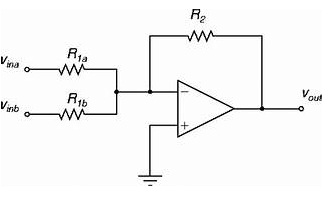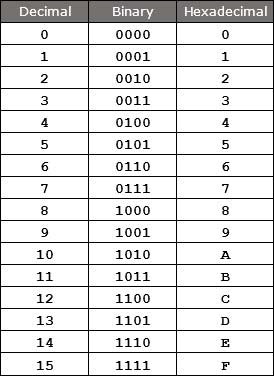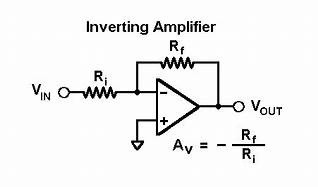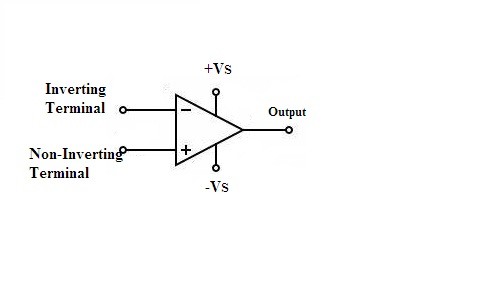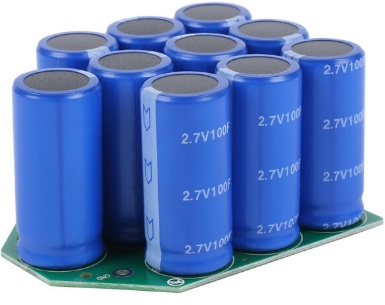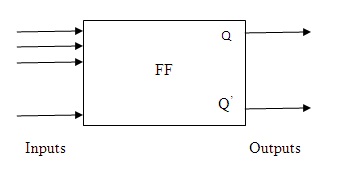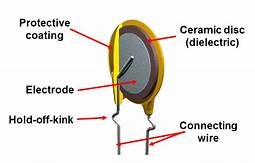Tantalum Capacitor is among one of the types of the ‘Electrolytic capacitors’. This type of capacitor is Polarized in nature. In this capacitor a porous tantalum metal is used as Anode. It is further covered by the conductive layer known as Cathode. There is a layer of oxide present in it which acts as the Dielectric. It is known for the capability of generating higher amounts of capacitance/volume. The reason for generating the capacitance high is that the dielectric in it is of very thin ty … [Read more...]
Summing Amplifier its Output Voltage Calculation and Applications
Summing amplifier, as the name goes it sums up the multiple inputs and provides a single output. At the input side, the inputs applied consists of multiple signals that is connected parallelly. This type of amplification circuit can be designed based on inverting or an non-inverting amplifiers. The single output from a summing amplifier can be determined by using the concept of the ohms law. Multiple input signals applied consists of resistors attached before it is connected to the t … [Read more...]
Hexadecimal Numbering System Conversion to Binary Numbering System
Hexadecimal Numbering System and the Binary Numbering System are used to represent the numbers in the ‘Digital Systems’. The language of all the computational processors which we used in our daily life cannot understand the general words. It can understand only 1's and 0's. The words or the programming languages need to be converted to machine languag to make the processor understand the language. The conversion of values from hexadecimal to binary seems to be easier. This is the main reason why … [Read more...]
Binary Numbering System Conversion into Hexadecimal Numbering System
Binary Numbering System is the simple representation of decimals in terms of '0' and '1'. The hexadecimal system is the compact way of representing the decimals. When the large values of decimals are considered the representation of it in terms of binary becomes lengthy. The binary system is based on the position of the digits starts from the right-hand side as its first preferred digit. This system dependency on the position value makes this system to refer to as 'weighted or position … [Read more...]
Inverting Amplifier Circuit Working and Applications
Inverting Amplifier Theory Inverting amplifier is one of a simple circuit in which the output is in phase shift with respect to the input. It consists of two input terminals named as inverting and the non-inverting input terminals. As the inverting terminal of it is provided with the input supply it is referred to as inverting amplifier. The output generated after the operation performed this signal is again fed back to the input terminal. In this way, the feedback is provided so that the noise … [Read more...]
What is an Operational Amplifier (Op-amp) : Types and Its Uses
An Op-amp (operational amplifier) is a device that possesses linear characteristics. It is good at the conditioning of the signals as well as is utilized for the amplification of the voltage signals. This is a basic differential amplifier that consists of three terminals. Among these three terminals, two are used for the input and one is utilized for the output. The first terminal at the input is known as the inverting one it is represented by the minus sign. The second terminal at the input … [Read more...]
Super Capacitor Working, Charging Circuit & Applications
Super Capacitor can be considered as the king of all capacitors where in future it might even replace the batteries. These are known for their ‘Double-layer' properties. These are also referred to as the ‘Electric Double Layer Capacitor (EDLC)'. Like a normal capacitor they also consist of two electrodes separated by a dielectric. But here the distance between electrode is very small and the dielectric is only a thin layer of insulating material . The electrode with the insulating material i … [Read more...]
What are Flip Flops : Types with Block Diagrams
Flip-Flops are the basic elements of switching circuits whose main purpose is to act like an on/off switch. Based on the memory element switching has been classified as combinational or sequential. Whenever the term of the digital system rises there must be some sequence between the present and passed inputs this can only be achieved by a sequential switching circuit. The processed outputs are based on the present and the previous states in sequential but in combinational it is purely based on … [Read more...]
Ceramic Capacitor Construction, Function, Code and Applications
Ceramic Capacitors are non-polarized and fixed value capacitors. In circuits where a small size of capacitor is required Ceramic capacitors comes into picture. These where intially developed in German as replacement for mica. Before 1920's due to insulating properties of mica it was used as a dielectric material in a capacitor. Later, as there was shortage for mica a paraelectric titanium oxide was used as a dielectric which formed the Ceramic Capacitor. The first Ceramic Capacitor was disc … [Read more...]
Electrolytic Capacitor Construction, Polarity, Types & Applications
Electrolytic Capacitor is one of the kind of General Capacitors. With the motive of achieving the larger value of the capacitance, these capacitors were designed. In this type, the Insulating Material utilized is "Electrolytic". The ions present in this Electrolyte will be high in concentration. The electrolyte chosen is of gel or fluid in type. It possesses 'two terminals' like other capacitors. In this type of capacitor, the terminals of it are polarized. This indicates the existence of p … [Read more...]
- « Previous Page
- 1
- …
- 3
- 4
- 5
- 6
- 7
- …
- 12
- Next Page »
